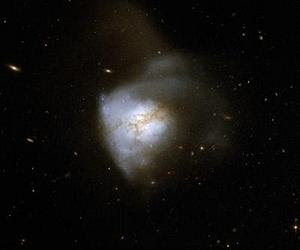NASA scientists have directed the Hubble Space Telescope to inspect a tiny patch of sky with an unusually long exposure time to obtain the deepest image of the sky ever obtained.
The image, dubbed the "Hubble Extreme Deep Field (XDF)", reveals the faintest and most distant galaxies ever detected, shedding more light on the early history of the universe.
Credit: NASA/ESA Hubble
Nine years ago, NASA decided to point Hubble at a seemingly empty, randomly chosen spot in the sky – no larger than a needle's eye at arm's length – and have it gather data over one millions seconds in total exposure.
The result was the iconic image dubbed the "Hubble Ultra-Deep Field" (HUDF)" which, even in a space that small, revealed in excess of ten thousand galaxies.
Now, NASA has done it again, taking the experiment to new levels. With XDF, NASA took a patch of sky within the original Hubble Ultra Deep Field and doubled the exposure time to a total of two million seconds, or an impressive 23 days.
Despite a much narrower field of view, the new picture shows 5500 galaxies in even greater detail, including the earliest we have ever observed.
The image, dubbed the "Hubble Extreme Deep Field (XDF)", reveals the faintest and most distant galaxies ever detected, shedding more light on the early history of the universe.
Credit: NASA/ESA Hubble
Nine years ago, NASA decided to point Hubble at a seemingly empty, randomly chosen spot in the sky – no larger than a needle's eye at arm's length – and have it gather data over one millions seconds in total exposure.
The result was the iconic image dubbed the "Hubble Ultra-Deep Field" (HUDF)" which, even in a space that small, revealed in excess of ten thousand galaxies.
Now, NASA has done it again, taking the experiment to new levels. With XDF, NASA took a patch of sky within the original Hubble Ultra Deep Field and doubled the exposure time to a total of two million seconds, or an impressive 23 days.
Despite a much narrower field of view, the new picture shows 5500 galaxies in even greater detail, including the earliest we have ever observed.




























